A uniform plank of mass m, free to move in the horizontal direction only , is placed at the top of a solid cylinder of mass 2m and radius R. The plank is attached to a fixed wall by mean of a light spring constant k. There is no slipping between the cylinder and the plank , and between the cylinder and the ground. Find the time period of small oscillation of the system.
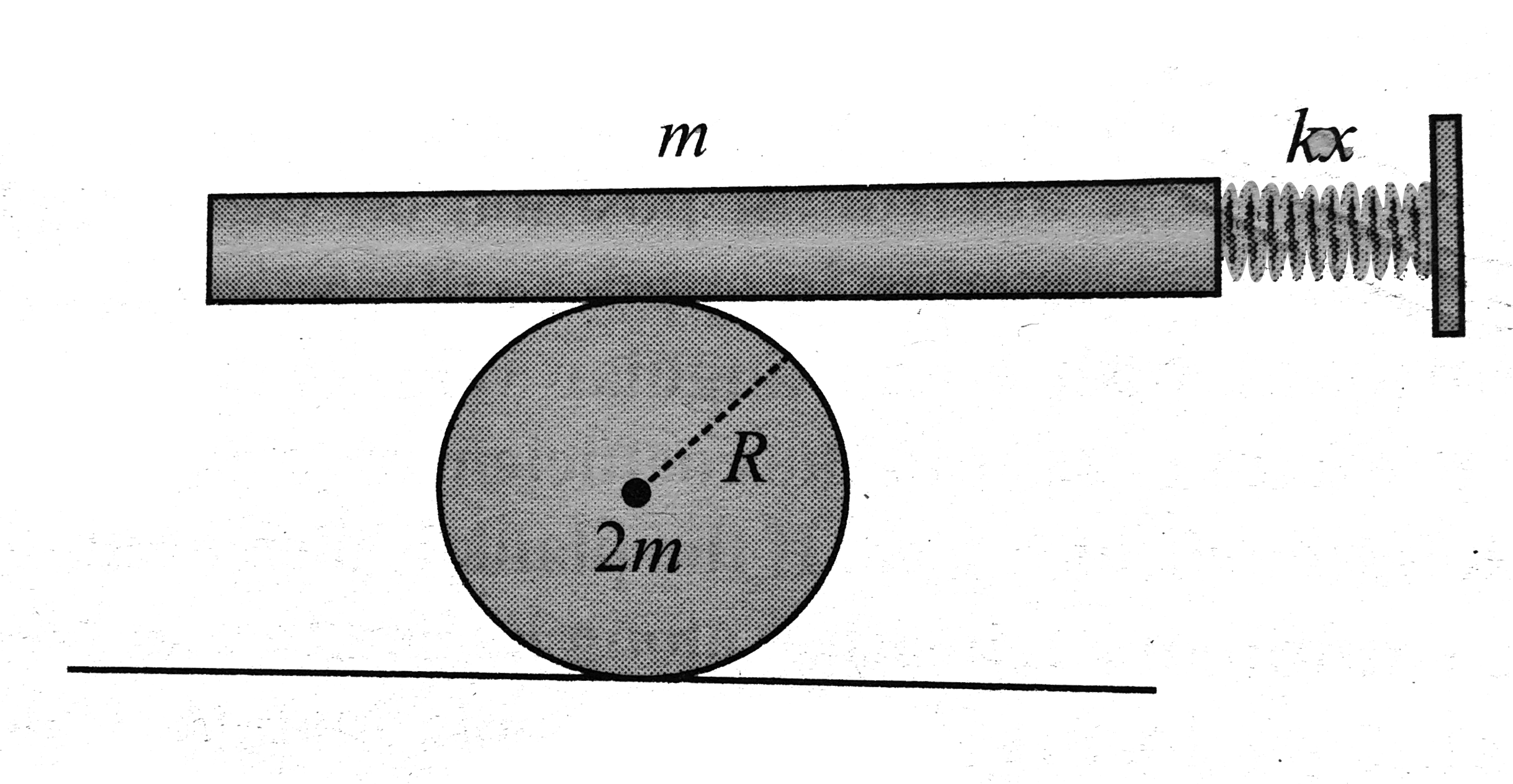
Method 1: When the plank is displaced slightly (say x) from equilibrium , as there is no sliding at any surface , the friction will be of static nature . As cylinder is rolling we can take the motion of the cylinder as pure rotation about point of contact.
Free body diagrams of plank and cylinder
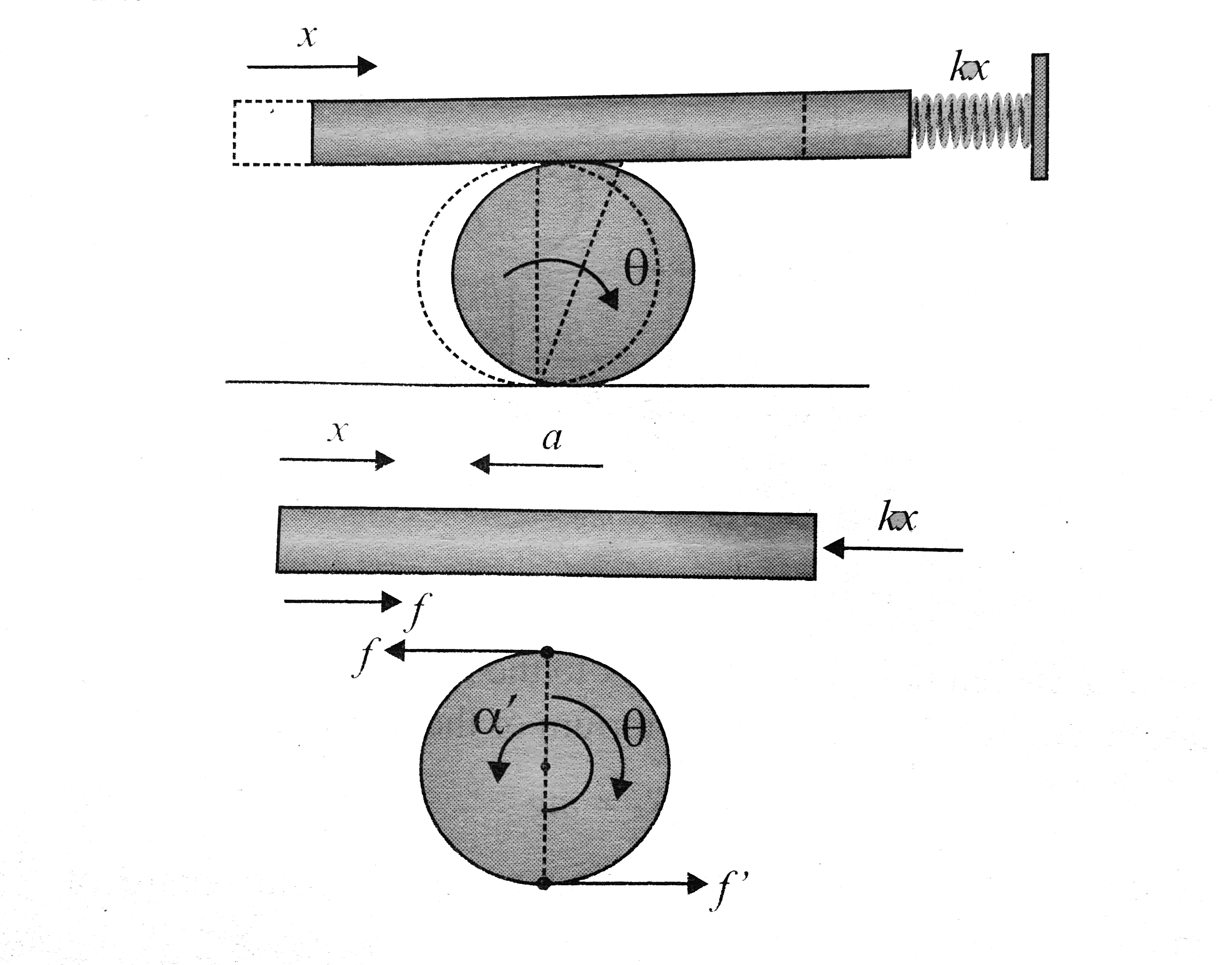
Equation of motion for plank
kx−f=m(a)
Writing torque equation to cylinder about plank of contact
f−(2R)=ip.α[12(2m)R2+2mR2]α
=3mR2α
or f=32mRa
As cylinder is rolling we can write, the acceleration of topmost point of cylinder (or plank)
a=α(2R)⇒αR=a2
Substituting the value of (iii) and (ii), we get f=34ma
Now, from Eqs (i) and (iv),
kx−(34ma)=ma
⇒a=4k7mx
Wtiting above equation with proper vector relation
¯a=−(4k7m)¯x
Comparing with stander equation ¯a=−ω2¯x
which gives ω2=4k7morT=π√7mk
Method 2: Suppose that the plank is displaced from its equilibrium position by x at time t , the center of the cylinder is therefore , displaced by x/2.
Therefore the mechanical energy of the system is given by
E=KE(plank)+PE(spring)+KE(cylinder)
=12mv2+12kx2+12Ipω2
IP=IG+(2m)R2=12(2m)R2+(2m)R2
=3mR2
As cylinder is rolling velocity of center of cylinder will be half of the velocity of the plank (top most point of the cylinder)
νcyl∈der=ν2=ωR⇒ω=ν2R
Substituting the value of ω in Eq. (i) we get
E=12mv2+12kx2+12(3mR2)(ν2R)
=12mv2+12kx2+38mv2
=78mv2+12kx2
Differentiating Eq. (ii) w.r.t. time
dEdt=0=78m.2v(dνdt)+k.2x,(dxdt
=78mν.a+kx.ν
Here 74ma+kx=0ora=−4k7mx
Comparing with a=−ω2x⇒T=2π√7m4k=π√7mk
Method 3: we can write Eq (ii)as E=ν2+4k7ms2=constant
as total energy of sysytem performing SHM is constant. Comparing with standard equation ν2+ω2x2=constant
which gives ω2=4k7morT=π√7mk
Topper's Solved these Questions
- LINEAR AND ANGULAR SIMPLE HARMONIC MOTIONBOOK - CENGAGE PHYSICSCHAPTER - LINEAR AND ANGULAR SIMPLE HARMONIC MOTIONEXERCISE - Exercise 4.1
23 Videos
- LINEAR AND ANGULAR SIMPLE HARMONIC MOTIONBOOK - CENGAGE PHYSICSCHAPTER - LINEAR AND ANGULAR SIMPLE HARMONIC MOTIONEXERCISE - Exercise 4.2
23 Videos
- LINEAR AND ANGULAR SIMPLE HARMONIC MOTIONBOOK - CENGAGE PHYSICSCHAPTER - LINEAR AND ANGULAR SIMPLE HARMONIC MOTIONEXERCISE - Multiple Correct Answer Type
9 Videos
- KINETIC THEORY OF GASES AND FIRST LAW OF THERMODYNAMICSBOOK - CENGAGE PHYSICSCHAPTER - KINETIC THEORY OF GASES AND FIRST LAW OF THERMODYNAMICSEXERCISE - Interger
11 Videos
- MISCELLANEOUS KINEMATICSBOOK - CENGAGE PHYSICSCHAPTER - MISCELLANEOUS KINEMATICSEXERCISE - Interger type
3 Videos
Similar Questions
A uniform plank of mass m=1kg, free to move in the horizontal direction only, is placed at the top of a solid cylinder of mass 2m and radius R. The plank is attched to a fixed wall by means of light spring of spring constant k=7N/m2. There is no slipping between the cylinder and the plank, and between the cylinder and the ground. the angular frequency of small oscillations of the system is
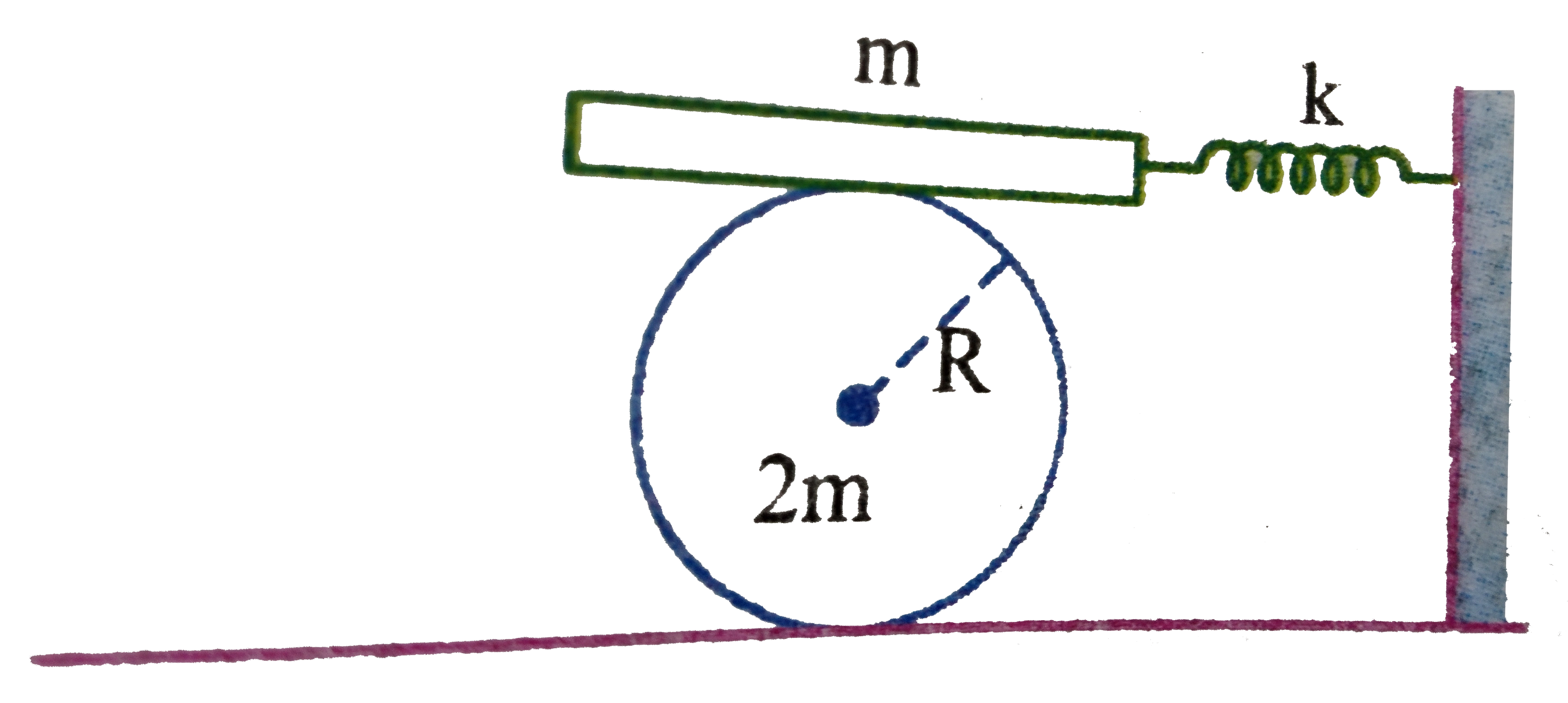
View SolutionA cylinder of mass 2kg and radius 10cm is held between two planks as shown in Fig. Calculate KE of the cylinder when there is no slipping at any point.

View Solution
Knowledge Check
A cylinder of mass M and radius R lies on a plank of mass M as shown. The surface between plank and ground is smooth, and between cylinder and plank is rough. Assuming no slipping between cylinder and plank, the time period of oscillation (When displaced from equilibrium) of the system is
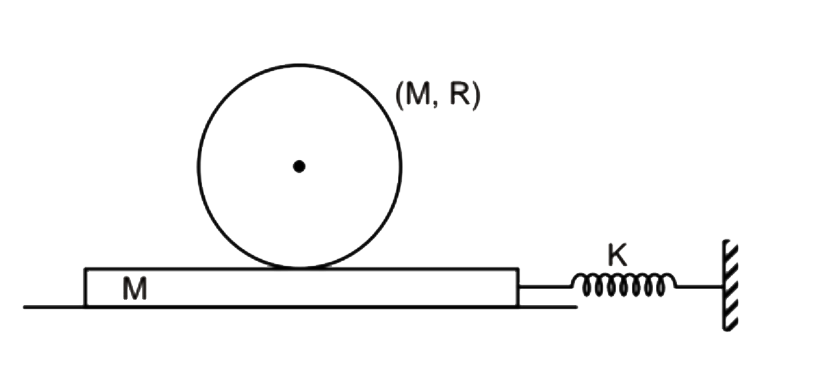 A2π√m3kB4π√2m3kC4π√M3kD4π√3M2k
A2π√m3kB4π√2m3kC4π√M3kD4π√3M2k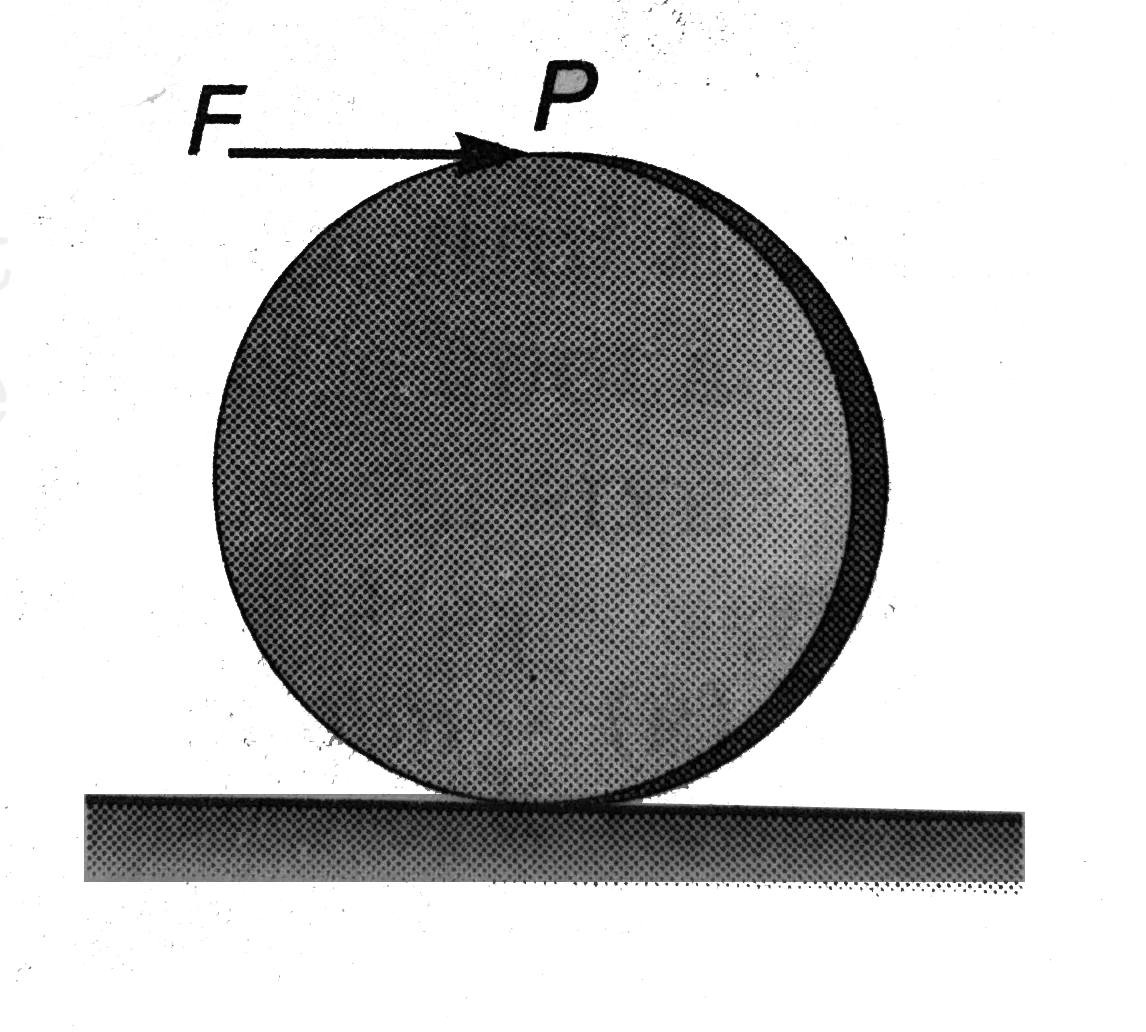
A uniform solid cylinder of mass m and radius R is placed on a rough horizontal surface. A horizontal constant force F is applied at the top point P of the cylinder so that it start pure rolling. The acceleration of the cylinder isAF/3mB2F/3mC4F/3mD5F/3m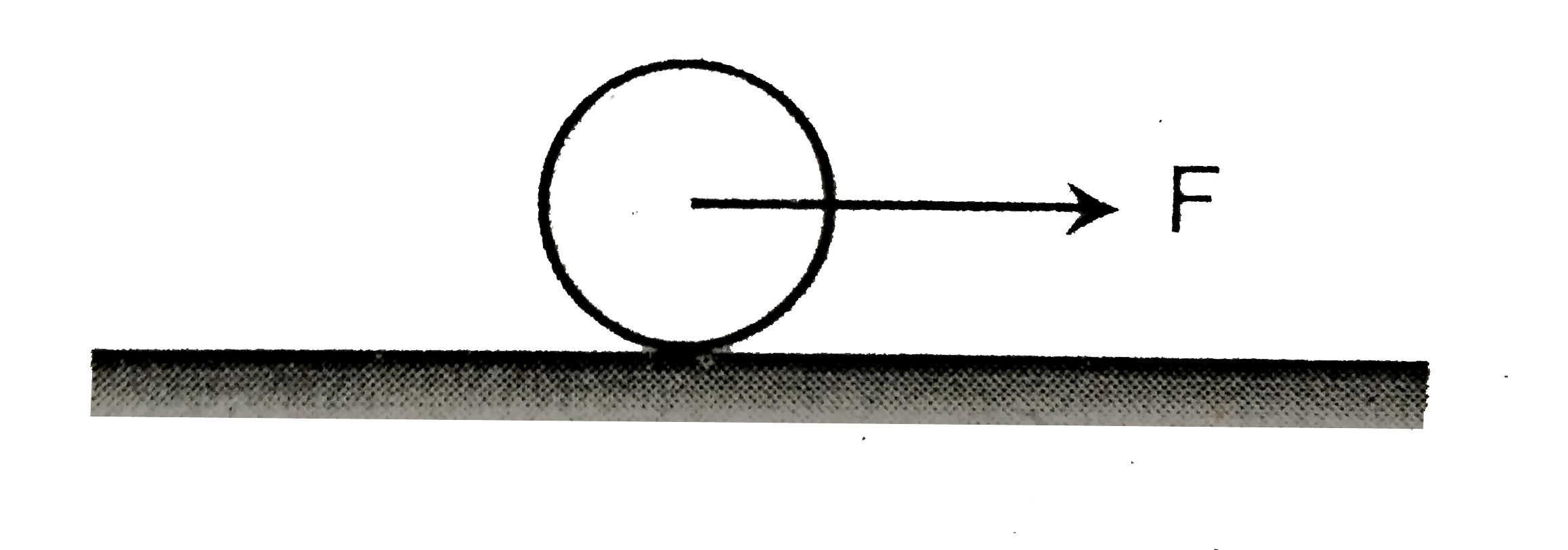
A uniform solid cylinder having mass M and radius R is pulled by a horiozntal force F acting through the center as shown. The cylinder rolls to the right without slipping. What is the magnitude of the force of friction between the cylinder and the ground?AF/4BF/3CF/2D2F/3
A solid sphere of mass m and radius R is placed over a plank of same mass m. There is sufficient friction between sphere and plank to prevent slipping.
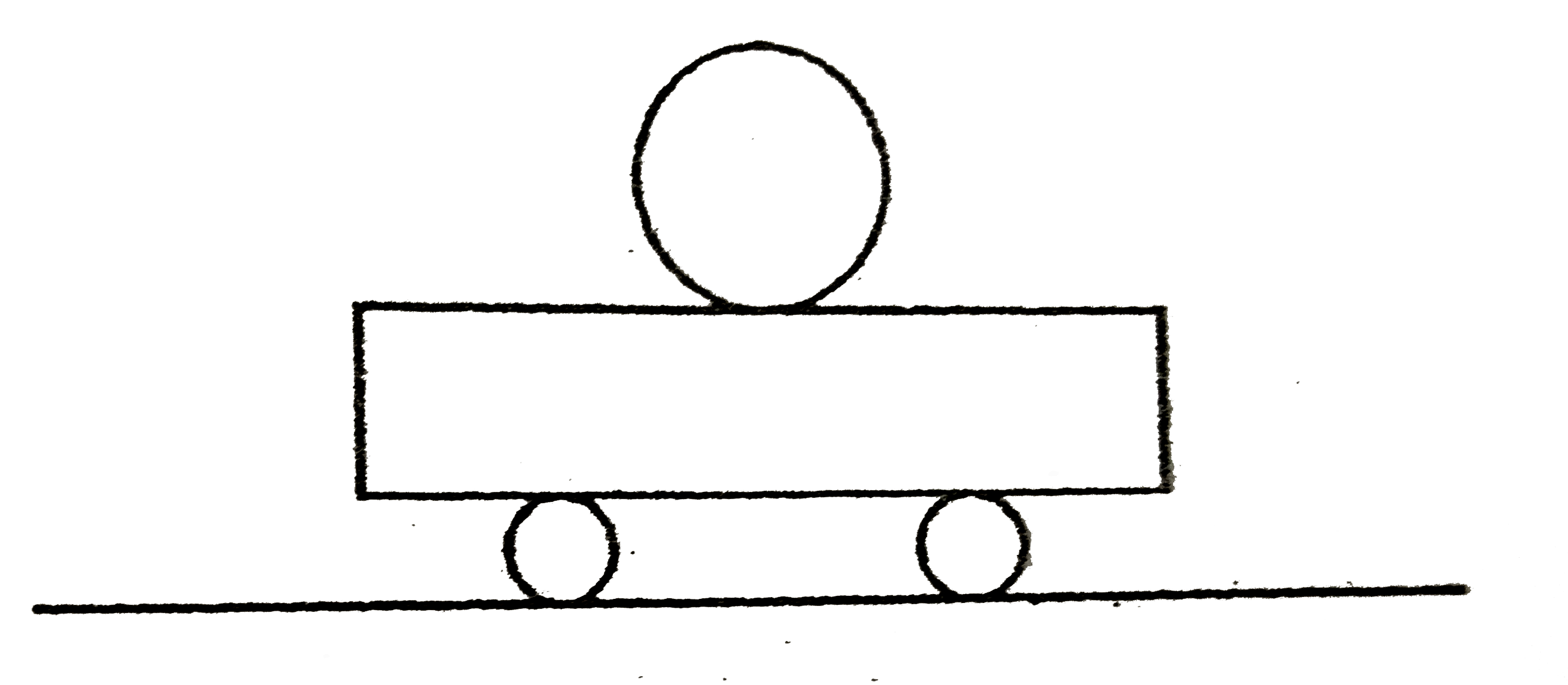
Force of friction between sphere and plank is
View Solution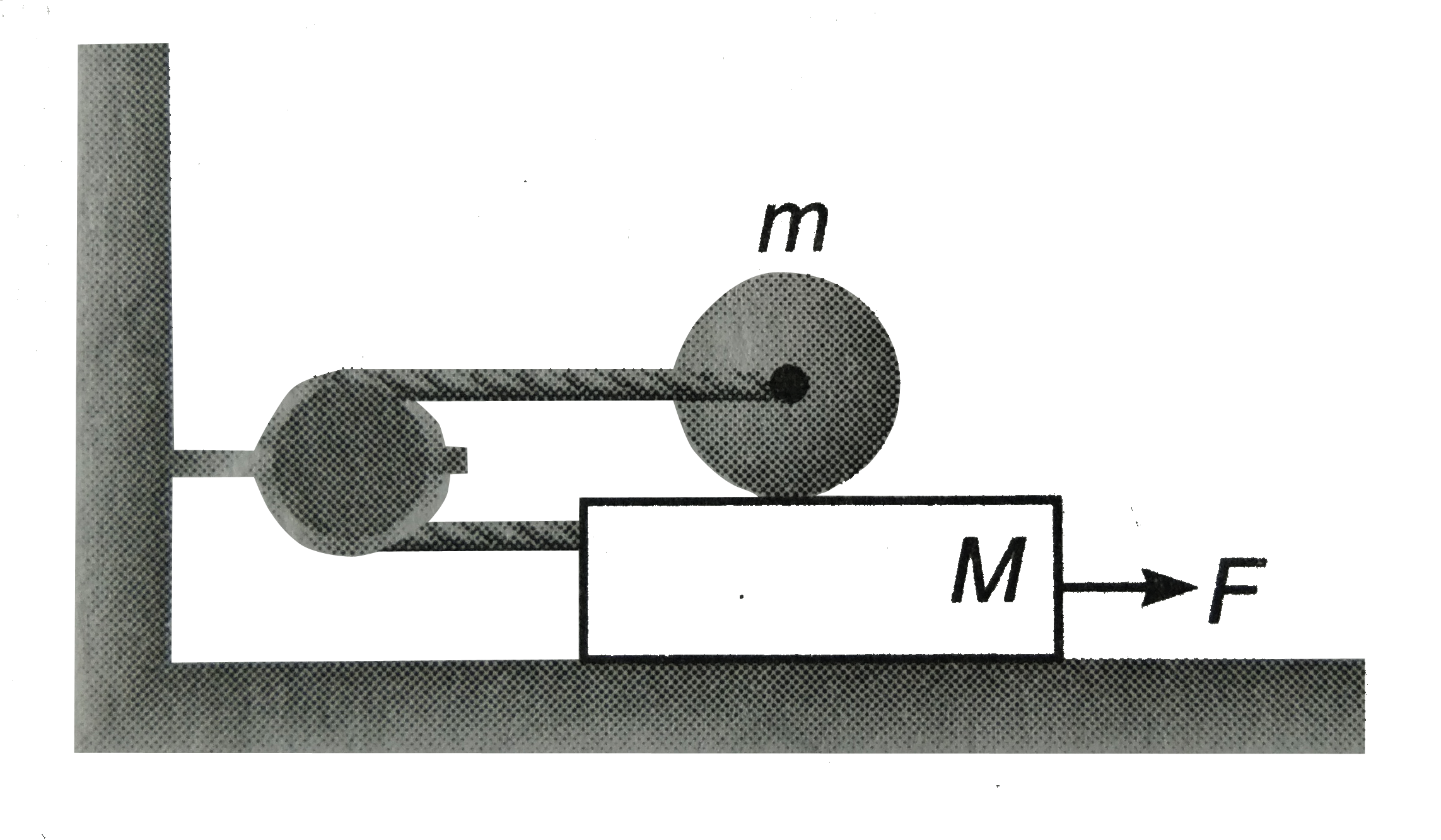
Find the acceleration of the cylinder of mass m and radius R and that of plank of mass M placed on smooth surface if pulled with a force F as shown in figure. Given that sufficient friction is present between cylinder and the plank surface to prevent sliding of cylinder.
View SolutionFind the acceleration of a system consisting of a cylinder of mass m and radius R and a plank of mass M placed an a smooth surface if it is pulled with a force F as shown Fig. Given that sufficient friction is present between the cylinder and the plank surface to prevent sliding of the cylinder.
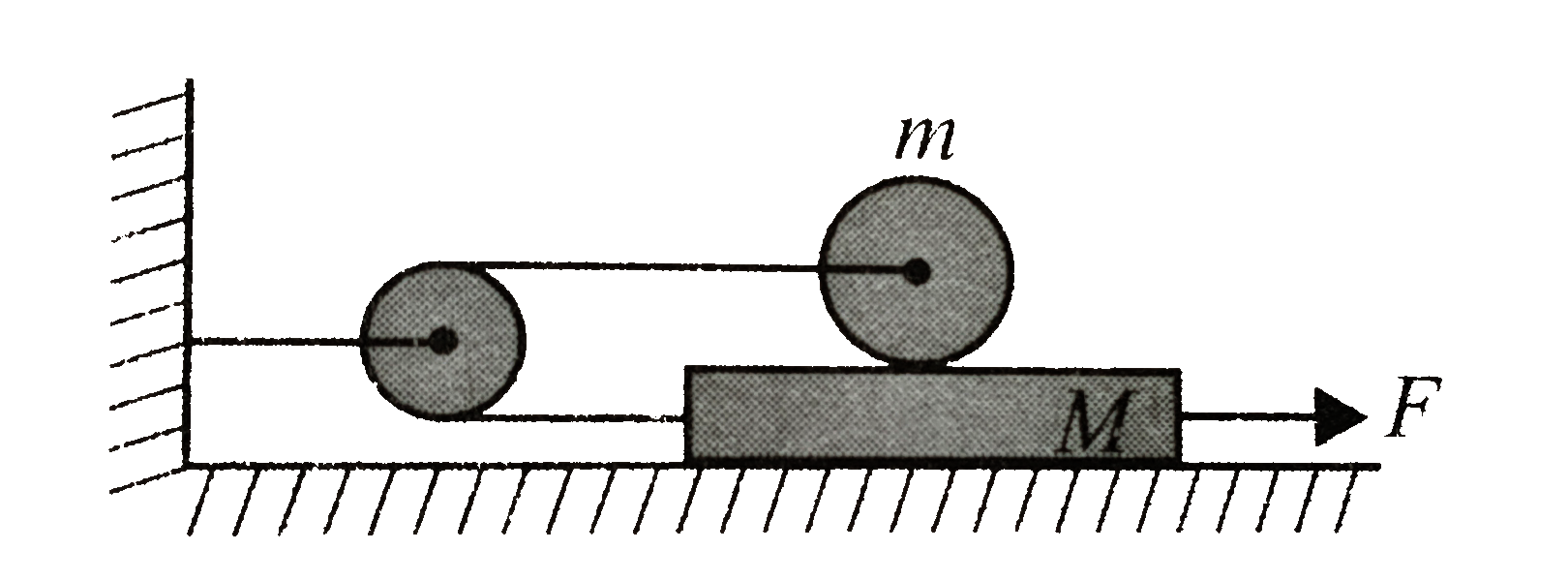
View SolutionA bullet of mass m moving with a velocity of u just grazes the top of a solid cylinder of mass M and radius R resting on a rough horizontal surface as shown and is embedded in the cylinder after impact. Assuming that the cylinder rolls without slipping, find the angular velocity of the cylinder and the final velocity of the bullet.
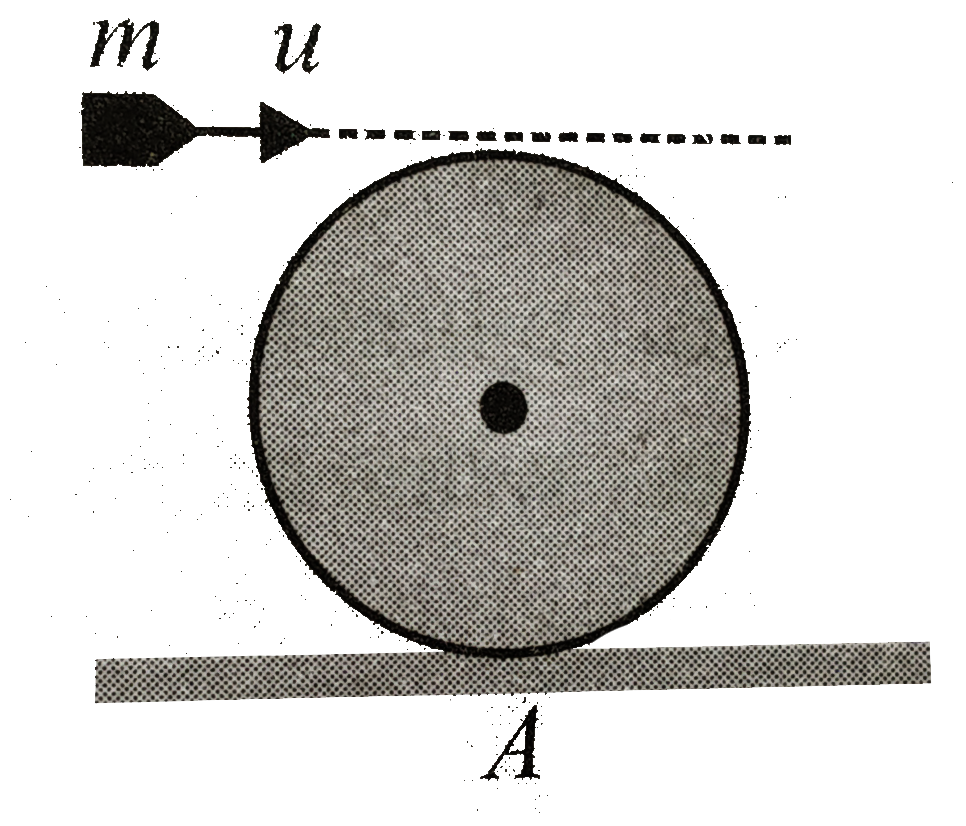
View SolutionIn the figure shown a plank of mass m is lying at rest on a smooth horizontal surface. A cylinder of same mass m and radius r is rotated to an angular speed w0 and then gently placed on the plank. It is found that by the time the slipping between the plank and the cylinder cease, 50% of total kinetic energy of the cylinder and plank system is lost. Assume that plank is long enough and um is the coefficient of friction between the cylinder and the plank.
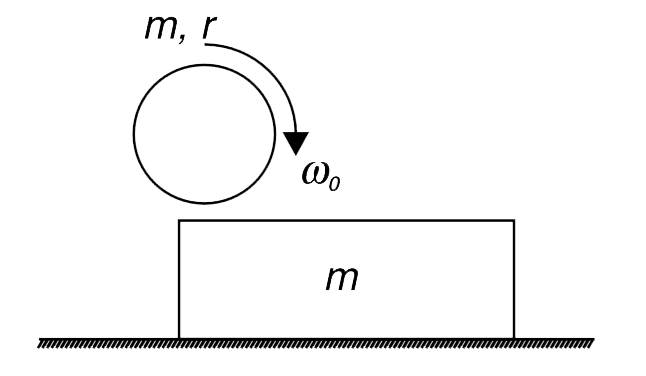
(a) Find the final velocity of the plank.
(b) Calculate the magnitude of the change in angular momentum of the cylinder about its centre of mass.
(c) Distance moved by the plank by the time slipping ceases between cylinder and plank.
View Solution
